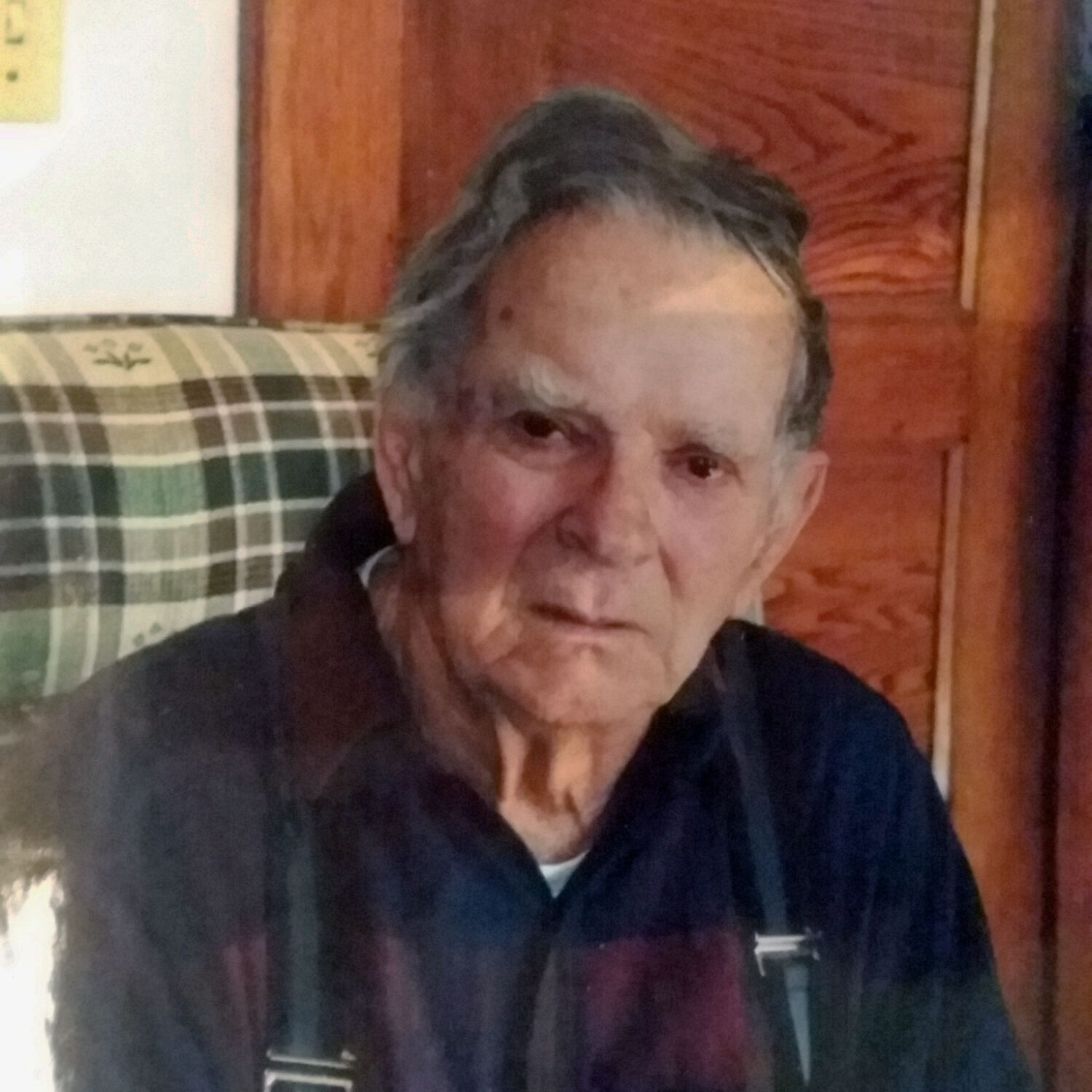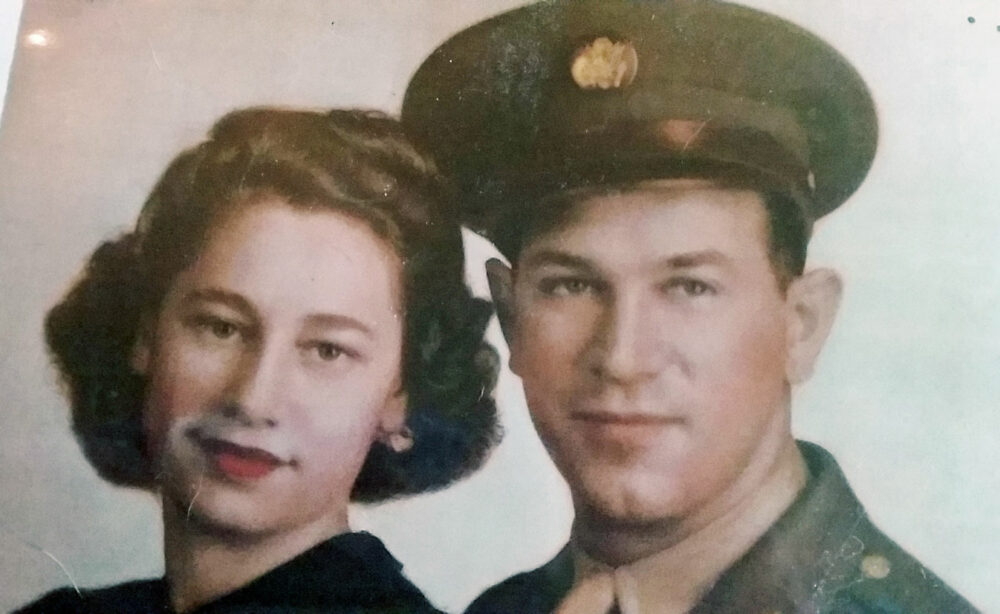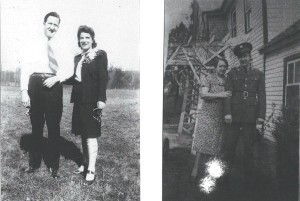by Priscilla Rall
Donald Kuhn
From the Mountains of Appalachia to the Mountains of India and Burma

The late Donald Eugene Kuhn traveled with the Army Air Corps to places most of us merely dream of. Born in 1921 to Ernest Rexfore “Rex” and Goldie Wolf Kuhn, he was one of 10 children, growing up on a small farm on Brandenburg Hollow road near Wolfsville. Rex bought out his two sisters, buying the farm for $2,700 after his father died. When it was appraised, the banker told them to figure out how much it was worth before the Great Depression, and then halve that amount! The family had a sleigh and a buggy, but they were not used after Donald was born. Instead, his father drove a 1923 Chevy.
The Kuhn’s raised eight to ten hogs a year and had four to five milk cows. On the 38 tillable acres, the family grew corn, potatoes, wheat, and green beans. They had no tractors but used draft horses, “Kit” and “Bird.” The kids picked the beans for 15 cents a bushel. Donald remarked that he “looked to a quarter as a big piece of money.” After a hard day picking beans, the kids would race down to their favorite watering hole to cool off swimming. His mother was busy from morn to night, milking the cows, churning butter, and cooking for her large brood. When Donald was about 10, he was old enough to be given the chore of getting water from the nearby creek for the steam engine that ran the threshing machine needed for the wheat, which had been put up in shocks in the barn. The farm had no electricity until 1942.
It was not all work and no play. One of Donald’s fondest memories was after a big snow, the kids would go sledding. There were still a few chestnut trees not yet killed by the blight, and Donald remembered picking them to eat. He also helped split the chestnut logs to be used for split-rail fences. They still had to walk to the Forest School, a mile or so away, but his father would harness up one of the horses and hitch a log to her and drag a path for his children to the school.
The Depression hit the small farmers hard. Often, the Kuhns would take eggs and chickens to Goldie’s grandfather’s store in Wolfsville and barter for sugar and kerosene. All of the neighbors enjoyed sitting around listening to the radio, especially the Grand Ol’ Opry. At that time, there were “hucksters” like Ross Eyler, Raymond MacLean, and my husband’s great uncle, Victor Pryor, who would buy the produce and take it to the city to sell. When the children needed shoes, Rex would take a cured ham to Harry Myer’s grocery to sell for enough money to buy shoes for at least a few of the children. The Kuhns were fortunate not to lose their farm as some neighbors did.
The Roosevelt Administration began many programs to help the struggling Americans. A Civil Conservation Camp (CCC) was built where Camp David is now. The government bought much of the land, and those living there had no choice but to sell. Isaac Smith was one of those who lost his farm to eminent domain.
After seven years at the two-room Forest School in Garfield, Donald went on to Middletown High School. Goldie was insistent that all her children attend high school. Donald recalled that “It always grieved her” not to be able to go beyond seventh grade, as she had to stay home and care for her sick mother.
After graduating from high school, Donald attended Columbia Business School in Hagerstown. He then worked six-and-a-half days a week for a coal company, also in Hagerstown. He made $12.50 a week. Then, he received his draft notice, but decided to enlist in the Army Air Corps. After three days at Fort Meade, he traveled to St. Petersburg, Florida, spending a week taking tests. After qualifying for clerical school, he was sent to Hattiesburg, Mississippi, for 11 weeks. His next stop was to the Waycross Air Base and the 385th Bombardment Squadron, 311th Bombardment Group, where he served until July 1943.
Then, it was goodbye USA and hello Asia. Leaving San Francisco on the USAP Brazil, a troop carrier, he sailed first to Tanzania, then around the south of Australia. At Perth, they picked up another ship and a destroyer, arriving on September 10 in the Indian Ocean. Finally on land, the men took three different trains and two different riverboats across India to reach its northeastern tip. They did stop at the British Camp at Gaya, where the Americans could hear the jackals howling at night. Quite an unnerving experience for a farm boy from Appalachia! The conditions were very primitive in India, particularly since they were experiencing a terrible famine at this time. At each train station, hordes of children would swarm around the train, begging for food. Finally, the men arrived at their destination, and Donald’s real work began.


 Born on April 5, 1921, just north of Thurmont at Franklinville, to Roy and Blanche Baker, was a boy they named George. George had three brothers and two sisters: Raymond, Donald, and Leroy, and Ruth and Helen (nicknamed Tootie). In 1940, at the age of nineteen, George decided he wanted to join the military. His brother, Raymond (nicknamed Hun), had already been in the military several months, and was somewhere around Washington, D.C.
Born on April 5, 1921, just north of Thurmont at Franklinville, to Roy and Blanche Baker, was a boy they named George. George had three brothers and two sisters: Raymond, Donald, and Leroy, and Ruth and Helen (nicknamed Tootie). In 1940, at the age of nineteen, George decided he wanted to join the military. His brother, Raymond (nicknamed Hun), had already been in the military several months, and was somewhere around Washington, D.C.